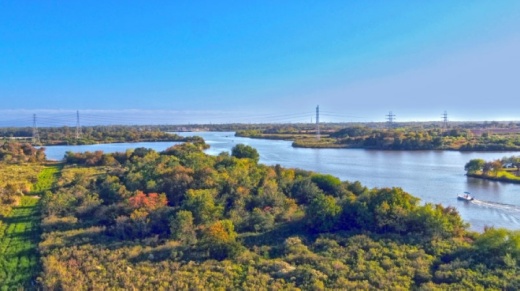Presented March 31, the findings focused on the creek from FM 1959 to Galveston Bay, which includes the Friendswood and Clear Lake areas.
“We’ve focused on trying to analyze things that have a high likelihood of being accepted by the community and implemented,” Freese and Nichols Project Manager Brian Gettinger said.
Solutions for the creek included conveyance along the creek and building tunnels to move water to Galveston Bay. Conveyance, which moves water along the creek, is estimated to cost $275 million. Conveyance improvements include Friendswood and Timber Creek basins, clearing and de-snagging from FM 1959 to Bay Area Boulevard, replacing the Hwy. 3 and Union Pacific railroad bridges at the creek, an FM 270 bypass, a Clear Creek outlet expansion and voluntary buyouts.
Homes that flood more frequently than every five years are good candidates for buyouts, Gettinger said.
While conveyance will improve flood mitigation along the creek, adding a tunnel system beginning at either FM 2351 or I-45 will improve flood mitigation even more and will make the projects more cost-efficient. However, these projects add even more cost to the total price tag, Gettinger said. Both tunnel systems use gravity to pull water out.
The FM 2351 tunnel would be a 40-foot tunnel that brings water to Clear Lake. If this plan were implemented, the Clear Lake outlet would have to be expanded, otherwise the tunnel would negatively impact flooding at Clear Lake. While the tunnel would decrease damage from flooding, adding the tunnel to the conveyance projects brings the price tag up from $275 million to $1.25 billion, according to data from Freese and Nichols.
Another option would be to do the conveyance projects along with a tunnel that begins at I-45. The tunnel would empty out at Galveston Bay, making the Clear Lake outlet expansion process unnecessary, Gettinger said. Building the I-45 tunnel along with the conveyance projects changes the total price tag from $275 million to $1.15 billion.
There are a few different ways to fund the project; however, it will be challenging to get funding for the project, and local funds will likely be required in all scenarios, Gettinger said.
“There are a lot of different ways to pay for this project,” Gettinger said. “None of them are easy.”
Potential financial partners include the U.S. Army Corps of Engineers, the Federal Emergency Management Agency, the Texas Water Development Board, the Texas General Land Office, the U.S. Department of Housing and Urban Development and the U.S. Department of Agriculture, Gettinger said.
Gettinger also suggested a Clear Creek flood control district, as Clear Creek runs through several municipalities. This district would allow all involved municipalities to have some control over the project. This would also be a taxing entity, if granted by local vote. This vote failed in 1998, and state legislation would be required to resurrect the district. If the district is resurrected and becomes a taxing entity, it would be able to generate revenue for Clear Creek projects with public support, allowing more citizen involvement in flooding projects.
Next steps for the study include finalizing the combination alternatives based on citizen feedback and identifying the needs of the next phases in the study, according to Freese and Nichols.





